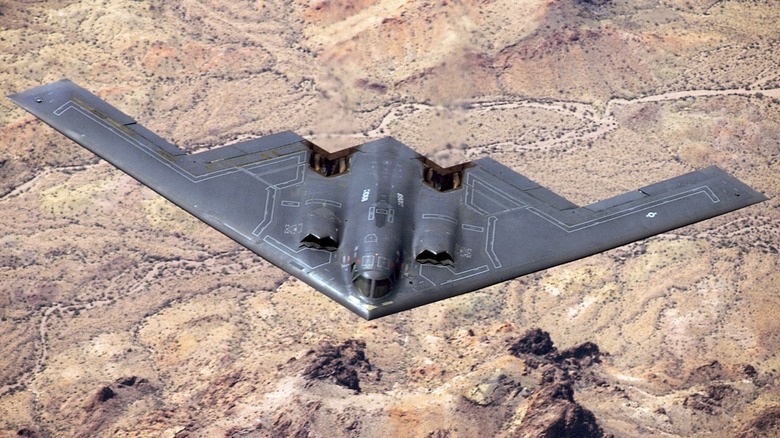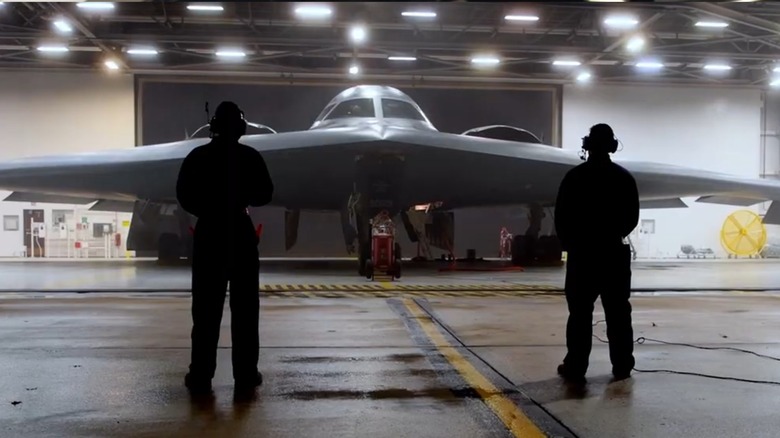The Surprising Requirement The B-2 Spirit Needs To Stay Stealthy
The B-2 Spirit is one of the United States Air Force's most complex and fascinating aircraft. The B-2 is the second aircraft designed with advanced stealth tech and the first dedicated stealth strategic bomber produced by the U.S. When it first started flying, the B-2 couldn't operate in the rain, but this little problem was eventually overcome. There are many stories like that about the incredibly expensive B-2, which ended up costing so much that the U.S. canceled the B-2 program with only 21 built.
Regardless, the B-2 remains operational until it's eventually replaced by the B-21 Raider. Until that happens, the B-2 continues to drop deadly weapons onto targets around the world, thanks to the bomber's unlimited range via aerial refueling. All of the Air Force's B-2s are stationed and flown out of Whiteman Air Force Base, Missouri, via the 509th Bomb Wing, which is the only place that serves the advanced aircraft. One of the reasons they are stuck in Missouri is due to the unusual storage needs they require.
Unbeknownst to many, the B-2 must be housed in an air-conditioned hangar, which isn't the norm for many aircraft. This is due to their radar-absorbent materials, which are incredibly sensitive to temperature changes, humidity, and dust. Because of this, they must be kept in special climate-controlled hangars, or they could suffer damage to the component that keeps them safe. Should the need arise to move the Air Force's 19 operational B-2s, a special portable shelter can be erected on-site.
The B-2 Spirit's unconventional storage needs
While the hangars used at Whiteman Air Force Base are perfectly adequate to house the B-2 fleet, portable options provide similar accommodations. Initially, the portable storage unit was called the B-2 Shelter Program, though this has changed to the B-2 Shelter System (B2SS) Extra Large Deployable Aircraft Hangar Systems (XLDAHS). The XLDAHS uses commercial off-the-shelf products to provide an air-transportable system that's durable, easy to establish and maintain, and can function anywhere in the world.
Each shelter is 250 feet wide by 60 feet high and weighs 175,000 lbs. They cost between $2 and $2.5 million each. Their use allows for the B-2 to be staged closer to a target location. This cuts down on long transit times from Missouri to places like Afghanistan, which can be a 44.3-hour trip. Some of these shelters were erected in safe areas around the world, including four in Diego Garcia. It's untenable to use pre-existing hangars, as these lack the climate-control requirements to safely keep the B-2 mission ready at all times.
The hangars, similar to those built at Edwards Air Force Base for the B-2's replacement, the B-21 Raider, measure 100 feet long, 220 feet wide, and 60 feet high. However, the newer bomber doesn't require climate control to maintain its stealth coating. For comparison, the B-2's wingspan measures 172 feet, it stands 17 feet high, and is 69 feet long. Another option rests at Andersen Air Force Base, Guam, where a climate-controlled hangar belonging to the Navy can accommodate the B-2 and many other large aircraft.

